 Who: Alexander Markov is a Russian filmmaker who works with cinema archives in St. Petersburg. He is constructing a film about the relationship between Soviet Union and Africa, using newsreel footage shot by Soviet filmmakers over the course of several decades. Markov showed a portion of that film, Our Africa during a special event at the 19th annual New York African Film Festival, co-presented by the Film Society of Lincoln Center. That event, “Africa is a Country: Talking Media and Russian Archives,” was moderated by Africa is a Country founder Sean Jacobs. It featured Markov and his fellow panelist: writer and film critic, Basia Lewandowska Cummings. The two discussed the Soviet-African cinematic relationship dating back to the 1960s, and its links to liberation movements on the continent aimed at spreading socialism to former-European colonies. Following the panel, Markov sat down with Camera In The Sun to discuss Our Africa, and his efforts to dig up cinematic treasures within Russia’s film archives.
Who: Alexander Markov is a Russian filmmaker who works with cinema archives in St. Petersburg. He is constructing a film about the relationship between Soviet Union and Africa, using newsreel footage shot by Soviet filmmakers over the course of several decades. Markov showed a portion of that film, Our Africa during a special event at the 19th annual New York African Film Festival, co-presented by the Film Society of Lincoln Center. That event, “Africa is a Country: Talking Media and Russian Archives,” was moderated by Africa is a Country founder Sean Jacobs. It featured Markov and his fellow panelist: writer and film critic, Basia Lewandowska Cummings. The two discussed the Soviet-African cinematic relationship dating back to the 1960s, and its links to liberation movements on the continent aimed at spreading socialism to former-European colonies. Following the panel, Markov sat down with Camera In The Sun to discuss Our Africa, and his efforts to dig up cinematic treasures within Russia’s film archives.
Opening statement from Talking Media and Russian Archives:
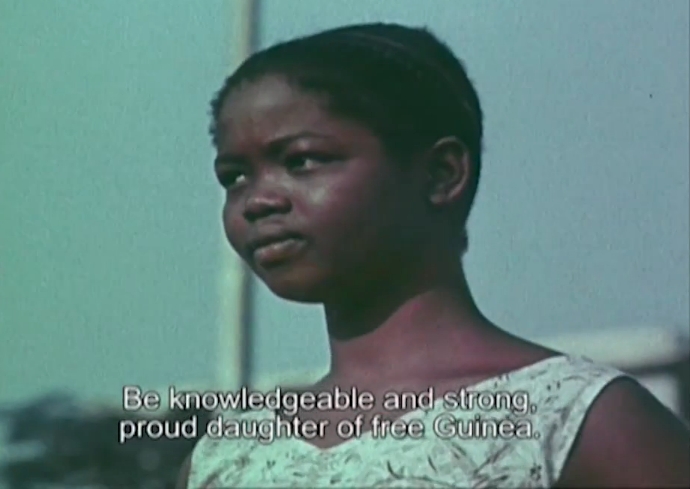 If I watch footage from the Russian film archive that was shot by Soviet filmmakers in African countries between 1957 and 1992, it is very important for me as a filmmaker to understand what I can call this footage. What should I call this footage? If I would like to use it in my film, then I can’t call it “propaganda.” Probably in some cases, it is propaganda. But I’d like to call it “historical footage.” That’s very important for me if I use it for my film, Our Africa, about a relationship between the Soviet Union and African countries — with a focus on the film footage. It was also important for me to put this footage in another context. Because as a film teacher, I know what we call “propaganda.” For example, Battleship Potemkin by Sergei Eisenstein can also be called propaganda. But at the same time, it’s also a big piece of art. It was really important for me to find a way in which I could put the sequences of the Soviet films in my film. And I found some objectives like emotion, attraction and clear position.
If I watch footage from the Russian film archive that was shot by Soviet filmmakers in African countries between 1957 and 1992, it is very important for me as a filmmaker to understand what I can call this footage. What should I call this footage? If I would like to use it in my film, then I can’t call it “propaganda.” Probably in some cases, it is propaganda. But I’d like to call it “historical footage.” That’s very important for me if I use it for my film, Our Africa, about a relationship between the Soviet Union and African countries — with a focus on the film footage. It was also important for me to put this footage in another context. Because as a film teacher, I know what we call “propaganda.” For example, Battleship Potemkin by Sergei Eisenstein can also be called propaganda. But at the same time, it’s also a big piece of art. It was really important for me to find a way in which I could put the sequences of the Soviet films in my film. And I found some objectives like emotion, attraction and clear position. 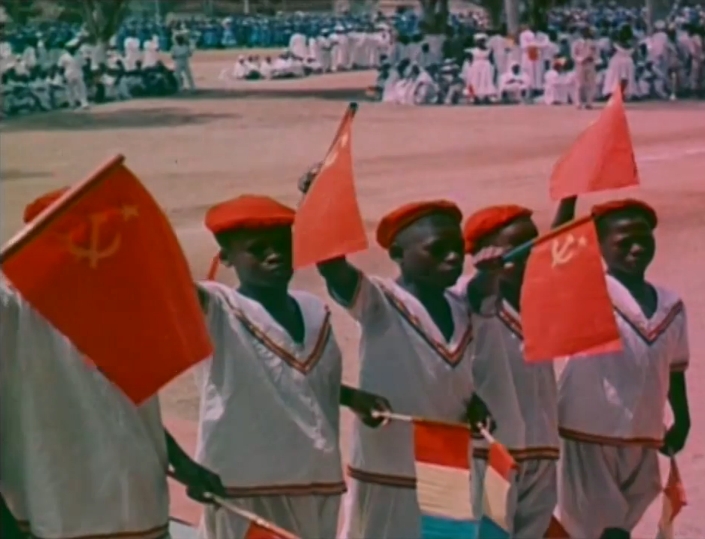 In a hundred films, we can watch African dancers. And this is very important, because it was an element of attraction of these films for the Soviet audience. Also, it was most important to show the historical view of the relationship between the Soviet Union, the Russian Federation, and the African countries and African people. For example, I have one family in my film that is a Liberian and Russian family. So my topic is to not just show the Soviet footage about Africa, but to discover it. Discover the time, the people, the souls, the spirit. It’s important for me not just to say, “I use propaganda.” It’s too simple to call it, “propaganda.” For example, in the history of Russian cinematography, we know the very good director — who was also a teacher of Andrei Tarkovsky — Mikhail Romm. And in his film, Ordinary Fascism, there’s a very interesting story. If I watch this film, for me it’s clear that Romm used footage of Hitler’s cameramen, but in another context. That is very interesting. And it’s very important to find another context of the footage, and to know not just the film, but also the history.
In a hundred films, we can watch African dancers. And this is very important, because it was an element of attraction of these films for the Soviet audience. Also, it was most important to show the historical view of the relationship between the Soviet Union, the Russian Federation, and the African countries and African people. For example, I have one family in my film that is a Liberian and Russian family. So my topic is to not just show the Soviet footage about Africa, but to discover it. Discover the time, the people, the souls, the spirit. It’s important for me not just to say, “I use propaganda.” It’s too simple to call it, “propaganda.” For example, in the history of Russian cinematography, we know the very good director — who was also a teacher of Andrei Tarkovsky — Mikhail Romm. And in his film, Ordinary Fascism, there’s a very interesting story. If I watch this film, for me it’s clear that Romm used footage of Hitler’s cameramen, but in another context. That is very interesting. And it’s very important to find another context of the footage, and to know not just the film, but also the history.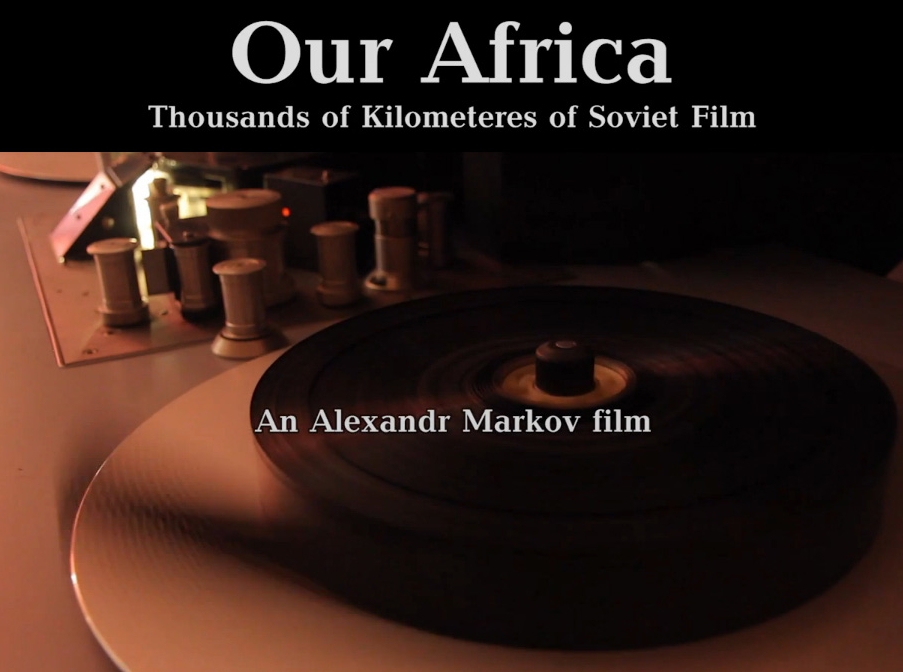 So, it’s very important to give dignity to this footage. Some of our archives have more than 1,000 documentary films. That means if we expand the search to individual African countries, the database returns over 1,000 titles. For example: Heirs of Great Africa, Africa: The Long Road to Independence, African Reportage, The Voice of Free Africa, Africa-built Socialism. Then for me it was also very important, if I saw for example titles like Forever Africa, Hello, Africa!, to understand that the Soviet filmmakers had a very positive view on Africa in the 1960s. And this film Forever Africa, it’s absolutely an anti-Soviet view. So, it’s very interesting. But I don’t think that Forever Africa is propaganda. It’s very dangerous to be too clear, because I think we should treat the footage with dignity. So, that’s my view.
So, it’s very important to give dignity to this footage. Some of our archives have more than 1,000 documentary films. That means if we expand the search to individual African countries, the database returns over 1,000 titles. For example: Heirs of Great Africa, Africa: The Long Road to Independence, African Reportage, The Voice of Free Africa, Africa-built Socialism. Then for me it was also very important, if I saw for example titles like Forever Africa, Hello, Africa!, to understand that the Soviet filmmakers had a very positive view on Africa in the 1960s. And this film Forever Africa, it’s absolutely an anti-Soviet view. So, it’s very interesting. But I don’t think that Forever Africa is propaganda. It’s very dangerous to be too clear, because I think we should treat the footage with dignity. So, that’s my view.
Where would Russians have originally seen the film footage used in Our Africa?
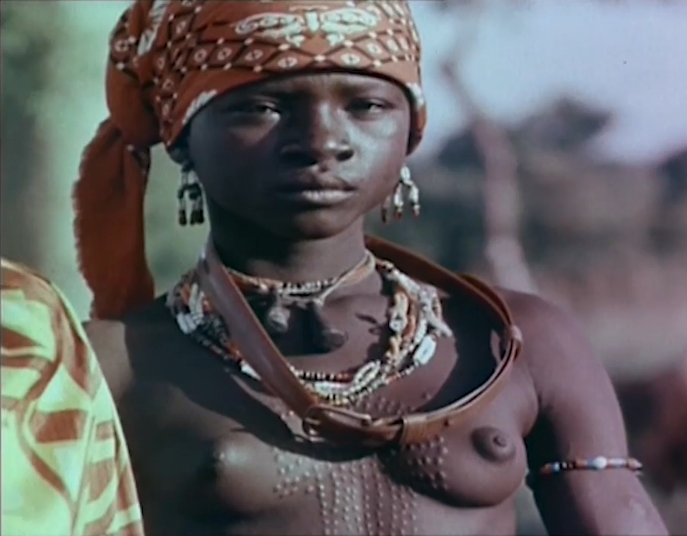 They showed in the cinema. The usual experience in the Soviet Union was that before the feature film they showed a short documentary film. And I know people that would wait for Soviet films about Africa. Why? It’s very interesting, because the Soviet Union was very closed, so the film was a view on the world. So the people would wait — probably some people more than for the feature films. This was in the 60s, 70s and 80s. And when I was a child, I had this experience also. I watched some films, I remember from Indonesia, before some French film about musketeers. They also showed on TV. I know the Russian TV archive in Moscow also, but this archive is very political. So in the Russian Film Archive, you can watch the country. In the TV archive, it’s just politics. For example, in this film about Angola that I saw in the Russian TV archive, it was a very strange political view. It was like a newsreel. So I think the footage from the Russian film archive were very open to the people to look at the country, and not just politics. Of course, there was also politics, because it was the curse of the government. And you know, it was a big problem that the
They showed in the cinema. The usual experience in the Soviet Union was that before the feature film they showed a short documentary film. And I know people that would wait for Soviet films about Africa. Why? It’s very interesting, because the Soviet Union was very closed, so the film was a view on the world. So the people would wait — probably some people more than for the feature films. This was in the 60s, 70s and 80s. And when I was a child, I had this experience also. I watched some films, I remember from Indonesia, before some French film about musketeers. They also showed on TV. I know the Russian TV archive in Moscow also, but this archive is very political. So in the Russian Film Archive, you can watch the country. In the TV archive, it’s just politics. For example, in this film about Angola that I saw in the Russian TV archive, it was a very strange political view. It was like a newsreel. So I think the footage from the Russian film archive were very open to the people to look at the country, and not just politics. Of course, there was also politics, because it was the curse of the government. And you know, it was a big problem that the 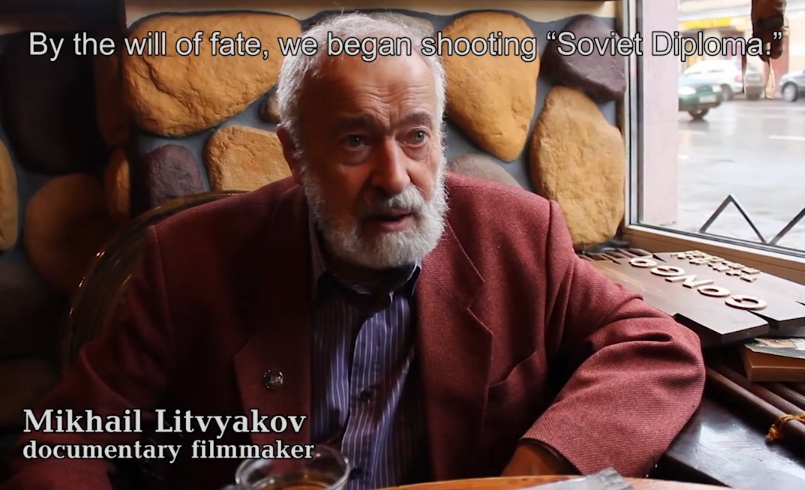 Soviet filmmakers weren’t free. Because they got money from the government, and the government pressed and pressed, until the 1960s — when it was a little more free.
Soviet filmmakers weren’t free. Because they got money from the government, and the government pressed and pressed, until the 1960s — when it was a little more free.
The Soviet people and post-Soviet people know nothing about the African filmmakers. It’s terrible, but it’s the truth. Because the school in Moscow was and is very closed. So the people taught the films, and went to Africa and Europe. But the problem of this Moscow film school is they have a good archives, but you can only see these films in some festivals in special programs. And these diploma films are just show in school — and that’s a lot of filmmakers from East Germany, from Vietnam. And these are treasures that I would like to know about, and the people also, so people can understand how close Africa was to the Soviet Union. This would be a very good thing for me, and for other people also. But I think we as enthusiasts can do it. We can go to the film school in Moscow, take these films, and show them to the public.
How were African film students treated in Russia during the Soviet era, and then after?
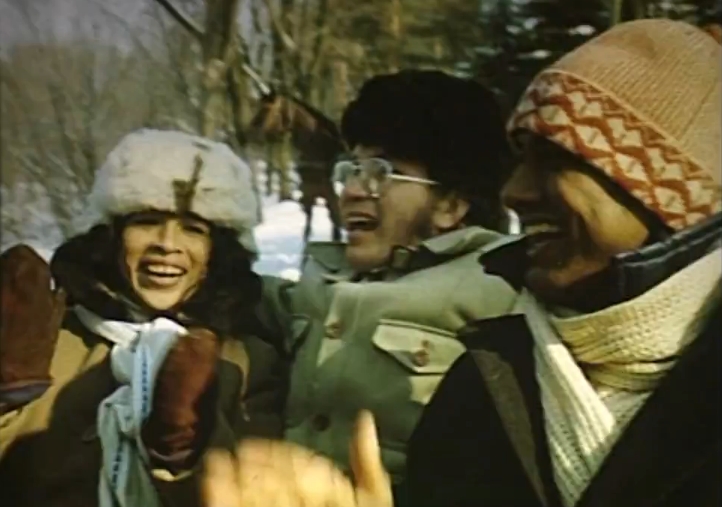 The Soviet Union, I think, was very comfortable for the students to study film, to study technique. But after the Soviet Union collapsed, a lot of foreign people had a lot of problems. And during this good relationship that was like an ideology of the Soviet Union — the international friendship between countries — I think African students hadn’t had a problem with integrating into Soviet society. But after the Soviet Union collapsed, it was hard. And now, it seems to me, that we are step-by-step moving toward integration and the good relationship that was during the Soviet Union. Because we lost this good relationship between 1992 and 2005-08. Because I watched a lot of footage for my film. and you can see the open faces of Soviet people, and the open faces of African people who really feel like friends. And I think this was the politics of the Soviet Union. This was a very, very good thing. But after Perestroika, after the Soviet Union collapsed, all was not so good for all foreign students. Not just for the students from Africa, but students from Soviet countries, and from other countries.
The Soviet Union, I think, was very comfortable for the students to study film, to study technique. But after the Soviet Union collapsed, a lot of foreign people had a lot of problems. And during this good relationship that was like an ideology of the Soviet Union — the international friendship between countries — I think African students hadn’t had a problem with integrating into Soviet society. But after the Soviet Union collapsed, it was hard. And now, it seems to me, that we are step-by-step moving toward integration and the good relationship that was during the Soviet Union. Because we lost this good relationship between 1992 and 2005-08. Because I watched a lot of footage for my film. and you can see the open faces of Soviet people, and the open faces of African people who really feel like friends. And I think this was the politics of the Soviet Union. This was a very, very good thing. But after Perestroika, after the Soviet Union collapsed, all was not so good for all foreign students. Not just for the students from Africa, but students from Soviet countries, and from other countries.
 I’d like to mention this terrible story about the St. Petersburg scientist, Nikolai Girenko, who was killed by skinheads because he supported African students who were attacked by nationalists during that period. It was a terrible situation in St. Petersburg — not only for students from Africa, but students from Asia, Latin America and other countries during the three terrible years between 2005 and 2008. In a trial, Girenko supported the students, and was killed in his flat with a gun. That’s unbelievable.
I’d like to mention this terrible story about the St. Petersburg scientist, Nikolai Girenko, who was killed by skinheads because he supported African students who were attacked by nationalists during that period. It was a terrible situation in St. Petersburg — not only for students from Africa, but students from Asia, Latin America and other countries during the three terrible years between 2005 and 2008. In a trial, Girenko supported the students, and was killed in his flat with a gun. That’s unbelievable.
For me as a child, it was very normal and good to have people who were another color. For example, we had a toy that was a small Black guy. I kept it in my room, and I gave it to my child to play with. So we had a lot of that. I think it was the international policy of the government. And some of that was destroyed after the Soviet Union collapsed. It’s my view, it’s my life and my experience. In my class, for example, we didn’t have African people. But we had people from Kazakhstan and Uzbekistan. It was part of the empire. They were our brothers. So, we lived together with friendship. It’s the truth.
What inspired you to use Soviet newsreels to construct Our Africa?
 The director of the New York African Film Festival, Mahen Bonetti met me seven years ago in Poughkeepsie and asked me about some Soviet films from Moscow. Her father had worked in Moscow, and she knew that Soviet filmmakers made a lot of films about Africa. I knew nothing about it. But I said, “OK, I will try to find some films for you.” So I started with the Moscow film school. But they just had the diploma works of African students, filmed mostly in the Soviet Union, and some in Africa. The topic was Soviet documentary films about Africa, so I checked in the electronic catalog at the film archive, and found a lot of films — treasures for the history of the relationship between Africa and the Soviet Union. So it was amazing, because the quality of the films is mostly very good. It’s not black and white films. Remember, this was the 1960’s. It’s color. It’s Kodak or Fuji film. As I understand, the Soviet Union really put good money into these films so they could make good images.
The director of the New York African Film Festival, Mahen Bonetti met me seven years ago in Poughkeepsie and asked me about some Soviet films from Moscow. Her father had worked in Moscow, and she knew that Soviet filmmakers made a lot of films about Africa. I knew nothing about it. But I said, “OK, I will try to find some films for you.” So I started with the Moscow film school. But they just had the diploma works of African students, filmed mostly in the Soviet Union, and some in Africa. The topic was Soviet documentary films about Africa, so I checked in the electronic catalog at the film archive, and found a lot of films — treasures for the history of the relationship between Africa and the Soviet Union. So it was amazing, because the quality of the films is mostly very good. It’s not black and white films. Remember, this was the 1960’s. It’s color. It’s Kodak or Fuji film. As I understand, the Soviet Union really put good money into these films so they could make good images.
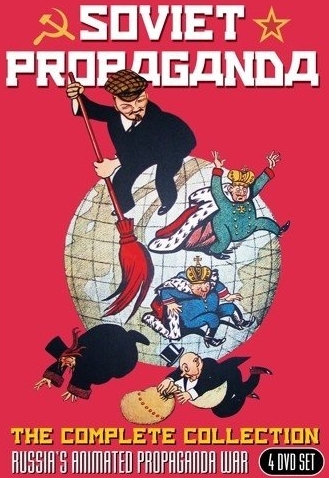 The mentality of the Soviet government was they wished to look good for foreign people. That was their diplomatic style. “We are the best.” That was very important. And so for the citizens of the Soviet Union, they could look bad. But for the foreign people, they must look good. That was very important. And then they must represent the Soviet Union as a powerful country that can make good films, like Hollywood. I also watched some films about Indonesia that are very good quality, and about other countries. Not only Africa, but about the UK also, which was also good quality. It was all about the presentation in the Soviet Union. If you make a good film, you make a good presentation. Ideology was an export of the Soviet Union. They would put socialism in African countries — and its the presentation of good socialism, good style, good life.
The mentality of the Soviet government was they wished to look good for foreign people. That was their diplomatic style. “We are the best.” That was very important. And so for the citizens of the Soviet Union, they could look bad. But for the foreign people, they must look good. That was very important. And then they must represent the Soviet Union as a powerful country that can make good films, like Hollywood. I also watched some films about Indonesia that are very good quality, and about other countries. Not only Africa, but about the UK also, which was also good quality. It was all about the presentation in the Soviet Union. If you make a good film, you make a good presentation. Ideology was an export of the Soviet Union. They would put socialism in African countries — and its the presentation of good socialism, good style, good life.
The African films were very easy to find. You can check in an electronic catalog, find the numbers of the reels, then write a letter to the archive and travel there to watch it. Then you pay for it, and put it in your film. It’s very simple. I used footage sequences from Soviet films about countries like Guinea, Mali, Tanzania and Congo Brazzaville. And for me, these sequences show a classic style of the Soviet view on Africa. The archives have a lot of films, so I will also use other sequences. After I can find some support for my film as a work-in-progress, I would like to show other countries and their peoples. I’m also looking for the directors who made the films at that time in Africa. Of course it is hard, because a lot of people are not alive. But I tried to find some directors who are still alive, and are now 70 or 80 years old.
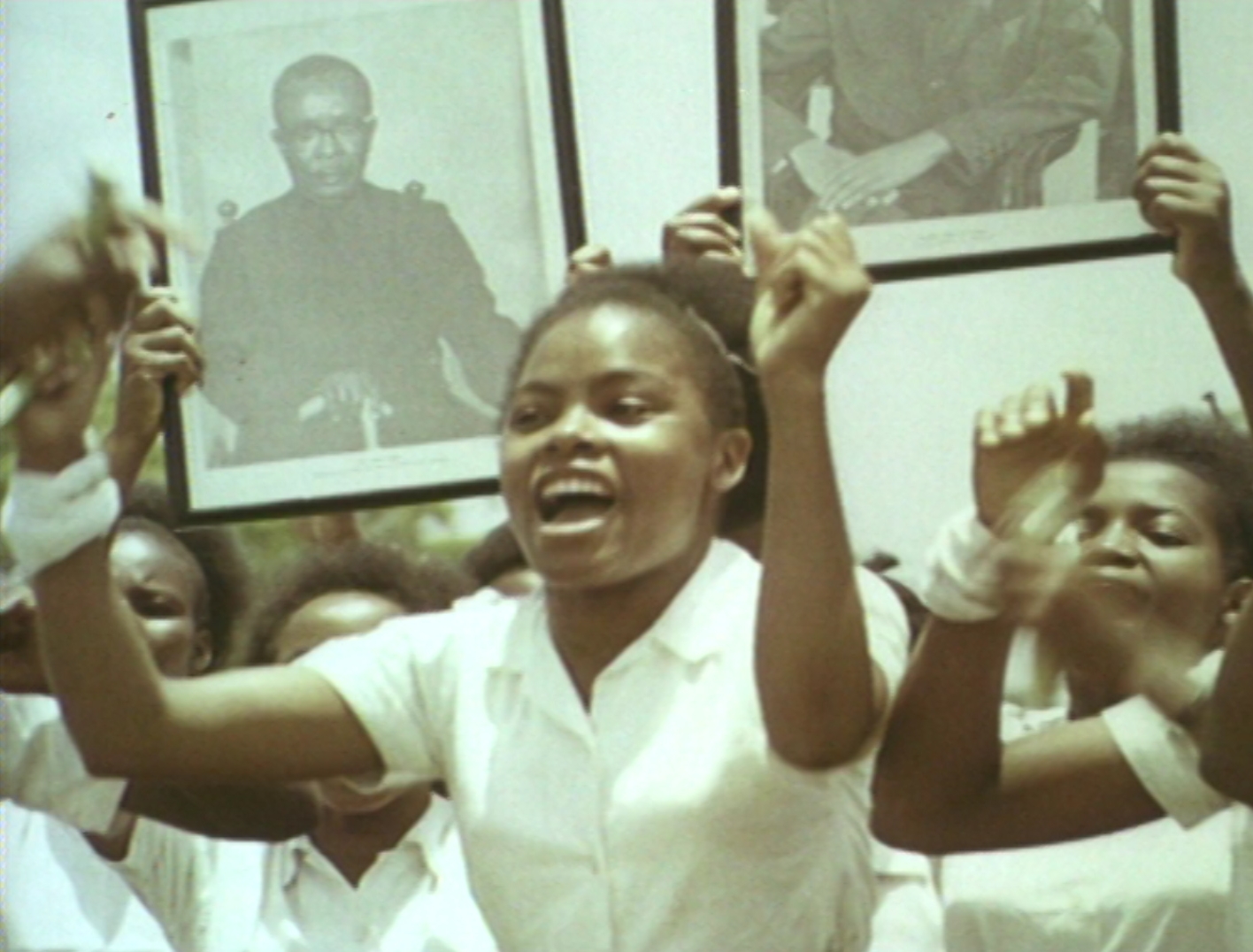 The Russian directors did this professionally. It was a good job, and it was also good to travel to other countries, and to Africa. Because the Soviet Union was very closed to its people. And if you were a filmmaker, then you could travel all over the world — but under the control of the KGB.
The Russian directors did this professionally. It was a good job, and it was also good to travel to other countries, and to Africa. Because the Soviet Union was very closed to its people. And if you were a filmmaker, then you could travel all over the world — but under the control of the KGB.
Do you have any favorite sequences?
A very interesting one is a song that is sung by a group of Tanzanian women about the leaders of Tanzania. On one side, it’s a really very good song and very good singers. On another side, it is just ideology. And that’s the marriage of ideology and a good style of singing that I like. That makes the image on the footage, and the image of that time also.  Because the footage is like archives of time. They are alive for us.
Because the footage is like archives of time. They are alive for us.
Another sequence is from Congo in the 1980’s. Students are being educated near the ocean. They’re standing in the water and reading books, because they have a university examination. And I asked the director if it was staged, and he said, “No, it was the truth. We were very excited about it. But it was not propaganda or staged. The truth was that the people taught near the ocean.”
What other documentary films have you made?
In general, I make documentary films. And I really like to make films about ethnic groups. So for example, I made a film about Turks living in the south of Russia, and about Kurds who are not Muslims.  It’s about the first religion of the Kurds, where the sun is like the eye of God. They are the people from Northern Iraq who traveled through Turkey and Armenia, and then immigrated to the South of Russia. And I also shot the film Russian Costa Rica, about students from Costa Rica who were educated in the Soviet Union, and about the women who married Costa Rican men and then made a career in Costa Rica. That’s an interesting relationship, because Costa Rica was a little bit friendly to the Soviet Union. So then the women could go to Costa Rica, and stay in Costa Rica.
It’s about the first religion of the Kurds, where the sun is like the eye of God. They are the people from Northern Iraq who traveled through Turkey and Armenia, and then immigrated to the South of Russia. And I also shot the film Russian Costa Rica, about students from Costa Rica who were educated in the Soviet Union, and about the women who married Costa Rican men and then made a career in Costa Rica. That’s an interesting relationship, because Costa Rica was a little bit friendly to the Soviet Union. So then the women could go to Costa Rica, and stay in Costa Rica.
With the Kurds, I was very curious about this sun religion. What is it, and why? It’s because these Kurdish people were monotheists before the Christians and before Muslims. And also, it’s a fusion between idols like the sun, and a real god. So that was really interesting, and then how these people  can keep their religion. Because the Kurdish people there keep their religion very strongly. There was a lot problems with Muslims in Northern Iraq, and they were very closed originally — only, they saved this religion. Every morning they say, “Thank you, God for the sun” to the sun. And they also kiss the sunlight. This is very interesting.
can keep their religion. Because the Kurdish people there keep their religion very strongly. There was a lot problems with Muslims in Northern Iraq, and they were very closed originally — only, they saved this religion. Every morning they say, “Thank you, God for the sun” to the sun. And they also kiss the sunlight. This is very interesting.
In the Soviet era, these Kurdish people were based in Armenia, and it was OK with the religion. Because the Armenian people like the Kurds, and the Kurds like the Orthodox church. They don’t like the Muslims, because these Kurds have just one temple in Northern Iraq. And in their religion, these Kurds can’t build a church, but the people need it. So they like the Christian churches because there’s a lot of sun. And they pray in the Christian churches, and Armenia is a Christian country. But after the Soviet Union collapsed, Armenia became a poor country, so these Kurds immigrated to the south of Russia to the area of the city of Krasnodar. It’s a very rich part of Russia.
 I have a lot of characters in my Russian Costa Rica film. And one woman was 17 years old when she fell in love with a student from Costa Rica. And after marrying him in Moscow, the family moved to Costa Rica. She was 18, and she was educated in law, and now she’s a famous lawyer in Costa Rica. The Costa Rican students would study at Patrice Lumumba University. A lot of foreign people studied at Patrice Lumumba University. For example, Costa Rica is a farming country, and they would be educated in the Soviet style about how to build a farm. Then, it is also very important for these people to be educated people in Costa Rica. It makes them different from poor people that are not educated. And it was really glorious for the people to have their Soviet Union education — to have some good social place. That was very important.
I have a lot of characters in my Russian Costa Rica film. And one woman was 17 years old when she fell in love with a student from Costa Rica. And after marrying him in Moscow, the family moved to Costa Rica. She was 18, and she was educated in law, and now she’s a famous lawyer in Costa Rica. The Costa Rican students would study at Patrice Lumumba University. A lot of foreign people studied at Patrice Lumumba University. For example, Costa Rica is a farming country, and they would be educated in the Soviet style about how to build a farm. Then, it is also very important for these people to be educated people in Costa Rica. It makes them different from poor people that are not educated. And it was really glorious for the people to have their Soviet Union education — to have some good social place. That was very important.
How do you finance your documentaries?
This is a big problem. Now, I am the producer of Our Africa, and I have a team, and we made this film just with our own funds. So of course I’ve tried to find a co-producer, and it’s a normal problem for all filmmakers all over the world. But I think it’s possible if you have something special. I’m not sure that I can find it in Russia, because it’s too complicated. We don’t have a lot of private producers, and it’s not  easy to receive government funds.
easy to receive government funds.
In St. Petersburg, we have the RosBalt news agency — ‘Ros’ is Russia and ‘Balt’ is Baltic. They have a project of small films about groups of people who are now based in Russia. They supported the Kurds film, and invited me to do it, and also a film about Meskhetian Turks. It’s a dramatic history of the Meskhetian turks in the Soviet Union. Because Stalin took them out of Georgia, and put them in Kazakhstan and Uzbekistan. So during World War II, Stalin thought that the Meskhetian Turks supported Hitler, because Turkey supported Hitler. And he was afraid of this, so he put them in other countries. It was terrible and a tragedy. And as of yet, the people don’t have a motherland. Some Meskhetian Turks live in the USA also. After 2005, the USA took some families. They are like a motherless people. Of course, they don’t have a very good relationship with ethnic Russians based in the 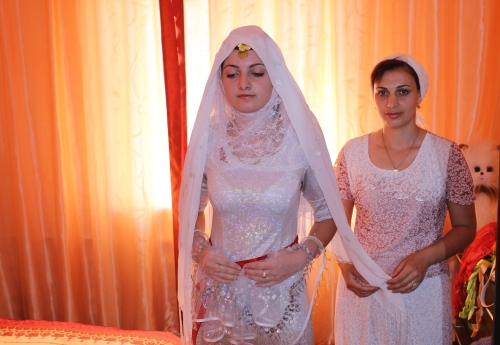 south of Russia. That’s also the drama of this fight. As I traveled from country to country, I felt the tragedy of these people, and I wanted to show it. But these people are very good and very simple. They have a lot of energy and a good style of life. I filmed them in the south of Russia. Because after Perestroika and the Soviet Union collapsed, Kazakhstan and Uzbekistan had a lot of national conflicts with Meskhetian Turks. It’s terrible what they did. They didn’t want them, so they immigrated to the south of Russia, and had a conflict with the south of Russia’s people.
south of Russia. That’s also the drama of this fight. As I traveled from country to country, I felt the tragedy of these people, and I wanted to show it. But these people are very good and very simple. They have a lot of energy and a good style of life. I filmed them in the south of Russia. Because after Perestroika and the Soviet Union collapsed, Kazakhstan and Uzbekistan had a lot of national conflicts with Meskhetian Turks. It’s terrible what they did. They didn’t want them, so they immigrated to the south of Russia, and had a conflict with the south of Russia’s people.